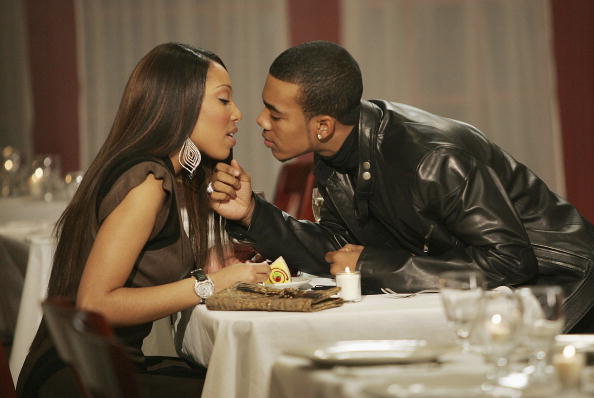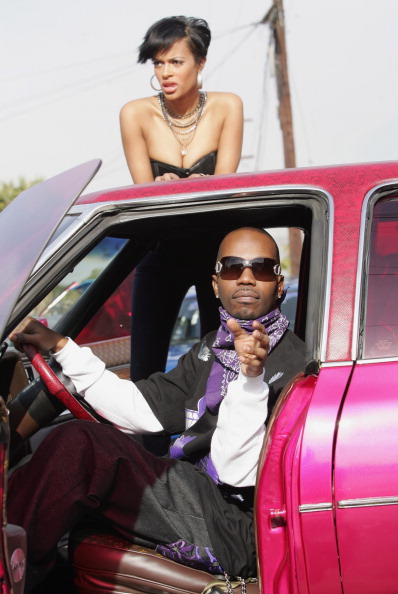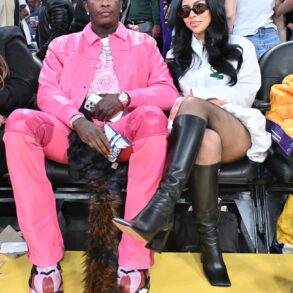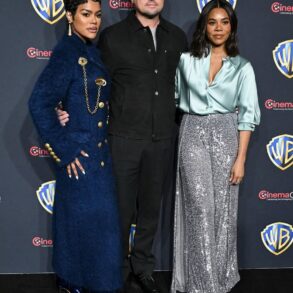In the ’90s and 2000s, shows like TRL and 106 & Park were portals into the lifestyles of rap’s biggest acts. Modern hip-hop pioneers like Jay-Z, DMX, Method Man, Busta Rhymes, Ja Rule and 50 Cent decorated their necks with expensive chains, flossed in fly whips like Jay-Z’s 1993 Lexus GS 300, and kept beautiful, stylish women around them at all times. Women are a staple in Hip-Hop. They contribute on and off the mic.
From the fierce femcees, who are pioneers in their own rights, to the video vixens who helped shape the hip-hop aesthetic, hip-hop wouldn’t be where it is today without the women who contributed to the movement.
Hip-hop turned 50 in August without acknowledging the impact of video vixens like Melyssa Ford, Buffie the Body, Rosa Acosta, Karrine Steffans, Gloria Velez, Kenya Moore and Esther Baxter.
They shaped beauty and body standards as top models of their era. It was barely mentioned. Vixens were hip-hop it girls. Modeling was just the start for them. They commented on concepts, argued about aesthetics and provided scene-stealing wardrobe selections. These talents helped shape beauty standards with their bodacious bodies as the top models of their era. They were dismissed as urban.
HelloBeautiful spoke to over a dozen models who appeared in hip-hop music videos to learn more about what they contributed to hip-hop, where they want to see the genre grow and how they feel about being left out of hip-hop’s golden jubilee.
Video Vixens Often Wore Their Own Clothes On Set
Liris Crosse glided through the metal detector towards the VIP stairs in a liquid gold club dress in Jay-Z’s “Do It Again (Put Ya Hands Up)” video. The model herself orchestrated the unforgettable hip-hop fashion moment and told HelloBeautiful she commissioned the dress. She understood what it took to stand out and harnessed that power to help tell the story. So did many of her peers.
“My best guy friend, William Henry Rawls, he’s a designer. He would design pieces for me,” explained Crosse. “That’s how the whole me and the gold dress happened for the Jay-Z. ‘Do It Again’ video. I bought that dress with me.”
Ambrosia Williams-Hilton appeared in more than a dozen videos before retiring. “When you’re selected as a principal model slash actress for a lead role in a music video. There’s a whole hired staff and team to bring your look together so, nine times out of 10, everything that you had on from head to toe was at the suggestion of a stylist, and then the director has to approve it,” explained Williams-Hilton.
The Allure Of A Vixen
“It was okay for you to kind of add your own little thing,” Williams-Hilton added.
Shelly Rio told HelloBeautiful she rocked her own leopard mini primping in the video for Lil Wayne’s “Lollipop” single. “I’m wearing my dress that I got from Marciano,” she said.
Eboni Renee Jackson, who appeared as herself on an episode of Entourage, showed up to many sets camera-ready. “I started having my friends prep my hair,” she said.
Nicole Ricca showed up prepared for some sets as well. “I had to come with my hair prepared a certain way because I have curly hair, and so sometimes they didn’t know how to do my hair,” she said.
Melyssa Ford laid the blueprint for crossing over from video vixen to businesswoman using her scorching hot image and creative savvy to extend her career.
Ford, who previously discussed the way video vixens impacted mainstream beauty standards with the Cut, told HelloBeautiful the way she contributed to projects off-camera was often ignored.
“They didn’t really look at the fact that a lot of times we had to be our own stylists or we had to be our own makeup artist or we had to be our own hair stylist,” said the Joe Budden Podcast co-host.
“I always made it a point to have some level of preparation before I even stepped foot on a music video. Because I knew what I wanted to look like and I couldn’t always trust that in the whole glam process, that what I wanted, my end result to look like would be accomplished.”
Ford, Ricca, Crosse and others did not receive the credit for this, but this was a part of the styling process.
“We ended up having to do a lot of our own, work on ourselves. You know? The work that we don’t get credited for whatsoever,” said Ford.
Video Vixens Were Like Creative Directors
Ford saw herself as a creative director, molding the image that propelled rappers to greatness.
“We as video models, we created the perception that the public has of all of their favorite rap stars,” Ford told HelloBeautiful. She noted that the minds behind the lyrical miracles didn’t always have magnetic camera presences.
“Very, very, very rarely did you meet somebody who had talent and charisma at the same fucking time,” she continued. “Most of the time these dudes were milk duds and we had to be creative directors, to a certain extent, we had to be the one that made the video watchable for people, and the fact that we don’t get any kind of recognition for any of that is insane!”
Ford said she and her peers consciously established rappers as sex symbols to promote their work using the same skills as Greta Garbo or Mary Pickford.
“We were basically silent movie stars,” said Ford.
“The perception that you have of your favorite rapper being hyper, masculine being virile, being this sex, symbol, it is completely manufactured by us – the jewelry, the cars, the houses, the aesthetics, but specifically us, that is why you like your favorite rapper, because we led you to believe he is your fucking hashtag goals.”
Ford was not surprised by the exclusion of video models from hip-hop’s 50th anniversary.
“White women completely tried to erase us from the whole me too movement, meanwhile the fucking phrase was coined by a Black woman. Feminism to modern-day feminism today does not include Black women. So, if white women were at that boardroom with a bunch of fucking guys, I can see why we were excluded,” she said.
“We weren’t even a footnote, we weren’t even a thought. That just doesn’t make sense to me.”
Jackson confirmed the creative contributions of models to the videos we rushed home to watch on 106 & Park. She recalled helping a rapper who was more of a lyricist than a showman fulfill the director’s creative vision. He was not used to the spotlight. His shyness was costing the production money.
Video Vixens Made Casting Decisions
“I got lots of my friends’ jobs. If I was booked for something, I suggested friends, or I got friends jobs on multiple jobs or when I was in New York. I live in LA now, but when I was in New York, we would tell each other when there were video castings, and we would all go together, and we would all get booked together,” said Ivonnah Erskine.
They knew the kind of women the directors wanted because they were those women. Rio recalled getting a distressed call from a set for a major video where a director told her, “I need you to call like 10 of your girls, and all come down to Vegas like right now. We will pay you in cash; bring like your hottest outfits and just come.”
Jackson helped a rapper who was more of a lyricist than a showman fulfill the director’s creative vision by engaging with the star.
“The rappers just wasn’t getting the director’s direction, you know? And at the time, the rapper was fairly new,” she said. “I could visibly tell that the director was getting frustrated like he was turning red in the face.”
She helped soothe his nerves. By establishing a rapport with the artist, their chemistry jumped off the screen.
“I remember just taking extra efforts to make him feel comfortable,” she said. “I’m a creative too,” she added. She still acts and has gone into production since retiring from videos.
“I like for stuff to come out good.”
Love Barnett-Jones believed in creating realistic moments and pushed back against outlandish fantasies. “They wanted me to kind of wear like this thong thing, and we were dancing in the club, and I was like, ‘I’m not doing that. That doesn’t make any sense. This is not something natural,’” she told HelloBeautiful.
Her occasional resistance grounded the fun fantasy in reality. It created a more tactile experience for viewers.
Sidelining The Video Vixens Was Not Only Erasure It Was Bad Business
“It’s a missed opportunity to talk about beauty. It’s a missed opportunity to talk about body diversity. And it’s a missed opportunity to also talk about sexuality,” said Crosse.
Ford agreed. “Even if you want to be super cynical and say that you just want to make it a purely capitalistic enterprise. Then you missed out on capitalism, you fumbled an opportunity to profit because you were so single and one track minded,” she said.
No cultural institutions pounced on the chance to examine how video models affected the culture’s landscape and permanently affected the aesthetic of hip-hop.
“I think sometimes the artists think that they’re doing us a favor, and they don’t realize we’re also doing them a favor as well. By showing up well, beauty is a gift. Beauty is art. The way I sashay into a room just like how I sashay on a runway, my presence is to be paid for and honored,” Crosse added.
Video Vixens Were Stars In Their Own Right
“People looked forward to watching music videos in the ’90s and 2000s. The video was just as important as playing the song on the radio,” said Nicole Ricca.
“At a certain time, video models were getting awards,” Love Barnett-Jones cited. “The Source Awards they started giving video models awards. That showed the impact as well. And at least, at that time, they did celebrate what video models were contributing.”
The Vibe Awards nominated Williams-Hilton for “Sexiest Video Vixen” in 2003.
Barnett-Jones believes that she and her peers should have been celebrated. She feels they are important as the producers who helped create the music, the executives who put projects together and everyone else who worked to expand hip-hop’s impact.
She cited examples. “They gave hip-hop dancers their accolades. They gave DJs their accolades,” she said.
“We’ve all contributed to the longevity of hip-hop, everybody,” she continued. “It’s just kind of unfortunate that they don’t see it that way.”
Video Vixens Set Beauty Standards
Rio Adrianna was motivated by the heyday of the video vixen. She appeared in videos for Nicki Minaj and Playboy Carti.
“I had always kind of looked up to the role of music video models because in terms of inclusivity as far as diversity and body types, I think that I found more of a place, among like video vixens than [in] traditional like print and commercial modeling,” she said.
Beauty supply stores flooded the streets with knockoffs of the crystal-adorned shades models wore in Memphis Bleek’s video for “Is That Your Chick” during the period it was airing.
“We kind of set the bar and raise the bar for the image and the style and the culture,” said Nichole “Nykki” Cummings.
Recognition Not Reparations
“I feel like people and the Black community and folks who really watch videos really appreciated us, but I feel like sometimes folks in the actual industry didn’t think enough of us to include us,” said Erskine. “It’s just that mentality of like, ‘oh, they don’t matter,’ or ‘they weren’t as important to the industry as they think they were,’ even though fans and stuff say otherwise.”
Fans recognize Crosse on the street still. She was approached three times by fans during her interview. “We love you, sis!” one called out.
“I don’t know if it’s been intentional not to highlight our efforts. But it definitely hasn’t been showcased the way I thought that it would have been or should have been. So it’s a little bit disappointing,” Williams-Hilton explained.
“Our work should just kind of be highlighted a little bit more and maybe in a more positive light. Because even though it’s not the standard traditional like runway or commercial modeling, it’s still modeling, and it’s still hard work,” Adrianna added.
Hip-hop celebrated the acrobatic b-boy, the backpacking-toting emcee and the stoic music mogul. However, video vixens did not get the same treatment.
Scapegoats?
However, their rock counterparts were not seen the same way. “People are assuming that the rappers are actually sleeping with the person in the video, but they don’t do that for rock stars,” said Ford.
“There’s been a very weird stigma attached to us, and it’s unfortunate because it was truly a beautiful contribution,” said Nichole “Nykki” Cummings.
“You would have thought we were responsible for f–king racial genocide. We were, according to our critics responsible for the fraying of moral fabric,” said Ford.
“We were leading all these young Black and Brown girls wayward with our participation and music videos. I was like ‘how in the fuck did we do all that all by ourselves?’”
“We became like the scapegoats,” she added.
Biancha Jones Pays Homage To The Video Vixen
Costume designer Biancha Jones is paying homage to the style of video vixens through fashion. She self-funded an exhibition to salute their impact. They saw themselves in the photographs, collages and careful recreations of their most notable looks. Jones painstakingly assembled the looks with the help of archivist Tianni Graham.
Jones wanted the women who influenced her through their style to feel “admired and valued.” “I went to one of the museums, and I didn’t see them sitting there, and that made me a little upset,” she told HelloBeautiful.
“They have their own stories,” Jones continued. “These women have helped too. They’re basically like the influencers of the time. You wanted to be them.”
RELATED STORIES:
12 Female Rappers Who Made A Great Impact On Hip-Hop Fashion
Grown Man Ish: We’re Swooning Over Method Man’s Hip-Hop 50 Cover
This post was originally published on this site be sure to check out more of their content.













